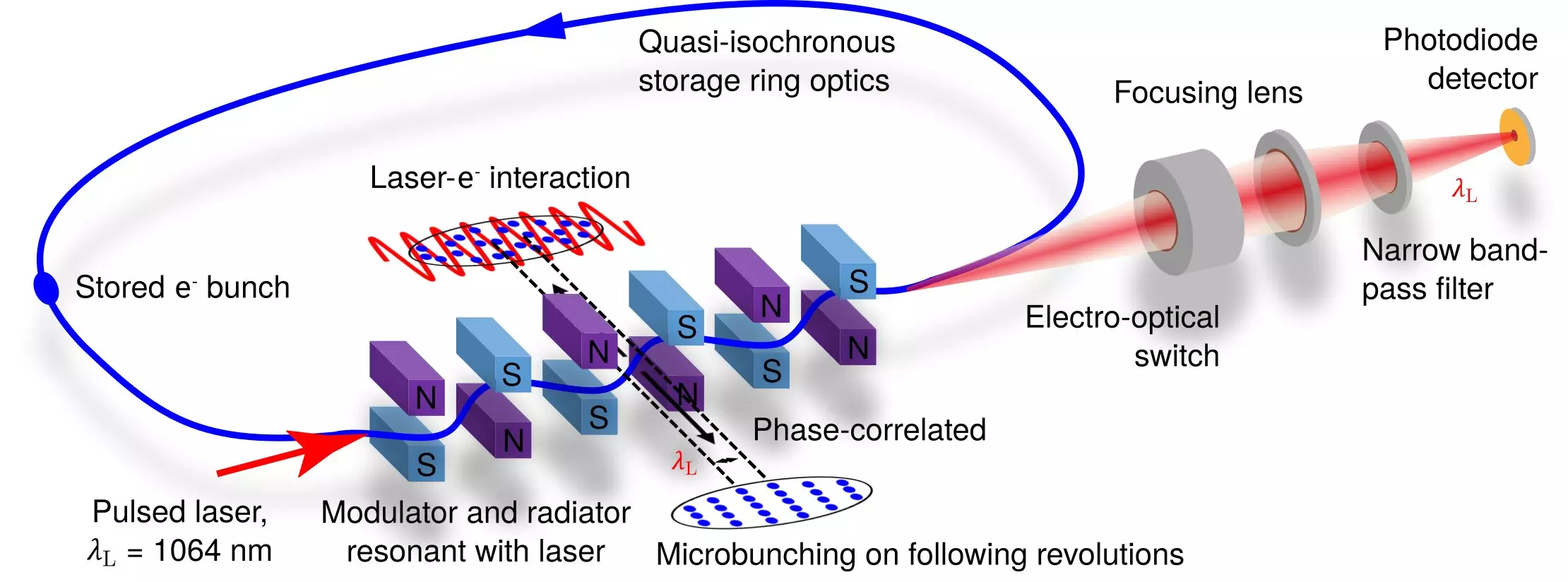When ultrafast electrons are deflected, they emit light, known as synchrotron radiation. This type of light is commonly used in storage rings, where magnets compel the particles to follow a closed path. The light emitted is longitudinally incoherent and consists of a broad spectrum of wavelengths, making it ideal for materials research due to its high brilliance. Monochromators are often employed to isolate individual wavelengths from the spectrum, but this results in a significant reduction in radiant power to just a few watts.
In 2010, physicist Alexander Chao and his doctoral student Daniel Ratner made a groundbreaking discovery to overcome this limitation. They found that if the electron bunches in a storage ring were made shorter than the wavelength of the emitted light, the radiation would become coherent and significantly more powerful—by millions of times. This innovative approach opened up new possibilities for high-power coherent light sources, akin to a high-power laser.
One key aspect of this advancement is the concept of micro-bunches proposed by Chao. While traditional storage ring electron bunches are around a centimeter in length with a distance of approximately 60 centimeters, micro-bunches are on a much smaller scale, measuring just one micrometer in length. By harnessing these ultra-short particle bunches, researchers can achieve coherence and vastly increase the power of the emitted light.
The Steady-State Micro-Bunching project, led by Chinese theorist Xiujie Deng, focuses on a specific type of circular accelerator called the isochrone or “low-alpha” rings. Through interactions with a laser, these accelerators can generate short particle bunches in the micrometer range. In a recent proof-of-principle experiment conducted in 2021 at the Metrology Light Source in Adlershof, researchers from HZB, Tsinghua University, and PTB successfully demonstrated the viability of Deng’s theory for producing micro-bunches.
While the prospects of utilizing high-power coherent light for materials research are promising, HZB project manager Jörg Feikes cautions that significant time and effort will be needed to fully realize this vision. Drawing parallels to the development of free-electron lasers, Feikes emphasizes the long-term nature of such groundbreaking projects. He envisions a future where the SSMB radiation source becomes a reality, building upon the foundational work of researchers and developers in the field.


Leave a Reply